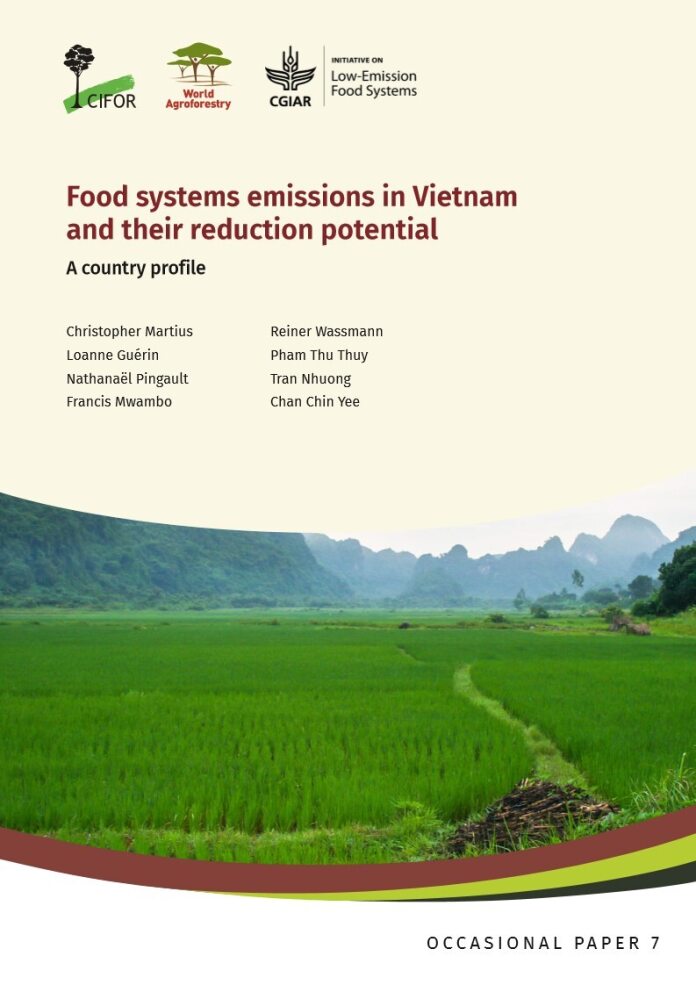The global food system is responsible for 23 – 42% of total net anthropogenic emissions. This share is expected to increase in the future, driven by population and economic growth and changes in lifestyle, as other economic sectors are progressively decarbonized. Without rapid and radical transformations in food systems, the Paris Agreement targets will remain out of reach. The Initiative on Low-Emissions Food Systems (Mitigate+) aims to offer a comprehensive and evidence-based overview of national land use, agricultural production, diets and food system emissions in selected partner countries (China, Colombia, Kenya and Vietnam) and explore possible pathways that reduce emissions while enhancing food security, nutrition, livelihoods and preserving the environment in these countries. This document focuses on Vietnam.
Viet Nam’s food system emissions increased in absolute level over the past decade (2010-2020) while their share in national emissions decreased. However, the food system emissions in 2020 still represent more than a quarter of total national emissions. The largest emission sources in Vietnam’s food system are, by decreasing order of importance, rice cultivation (34% of total food system emissions), enteric fermentation (12%), manure (11%), synthetic fertilizers (10%), food system waste disposal (8%), and household food consumption (8%). Altogether, these six activities emitted 86.1 MtCO2 eq in 2020 and accounted for 83% of all food system emissions.
This document thus highlights six priorities for action, well aligned with national priorities: (i) reducing emissions from rice production; (ii) addressing emissions from enteric fermentation and manure management; (iii) reducing emissions from synthetic fertilizer production and use; and (iv) improving the data situation to understand and to pinpoint the focus areas and address emissions from household food consumption and food loss and waste.
Download here.

